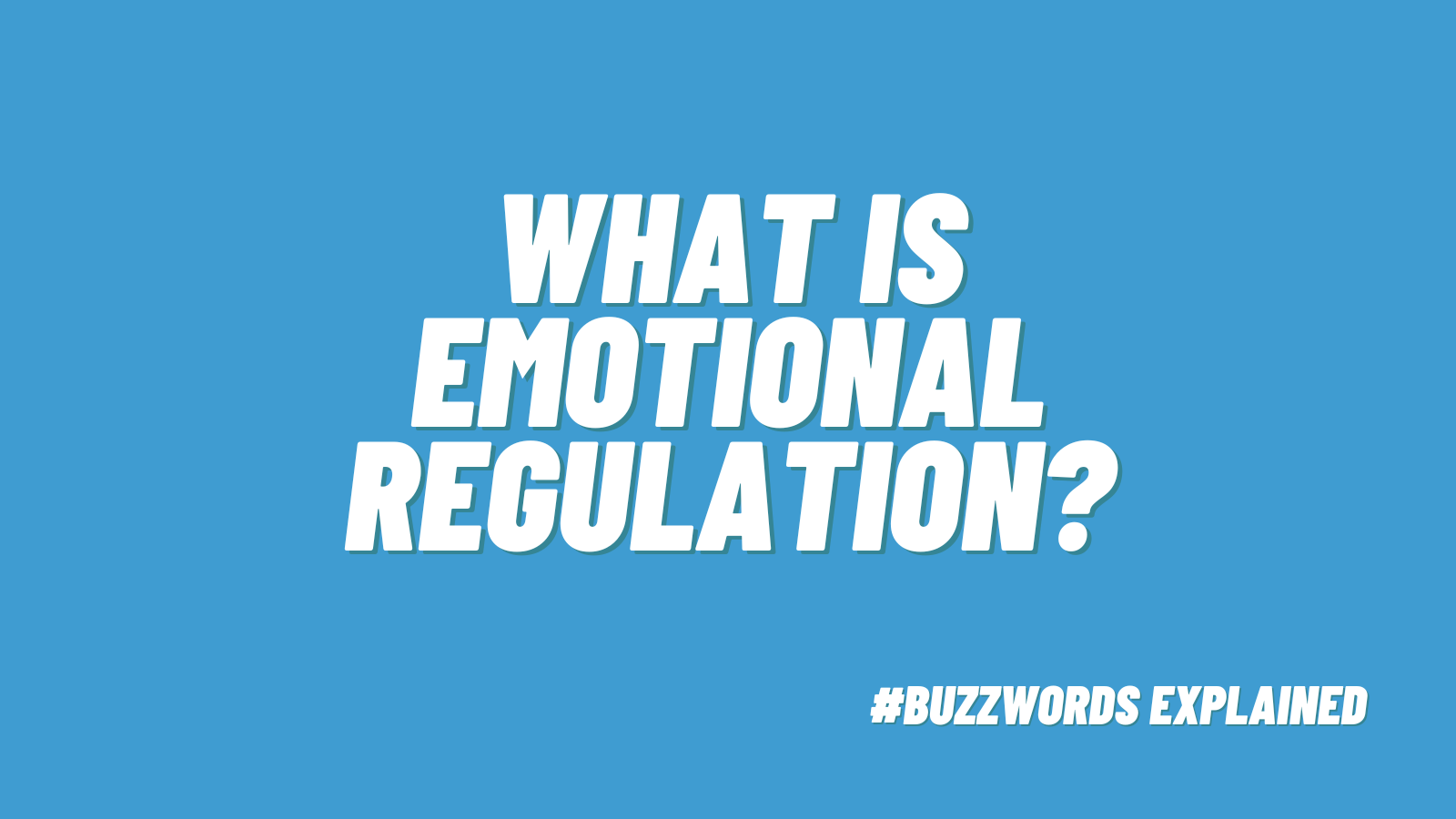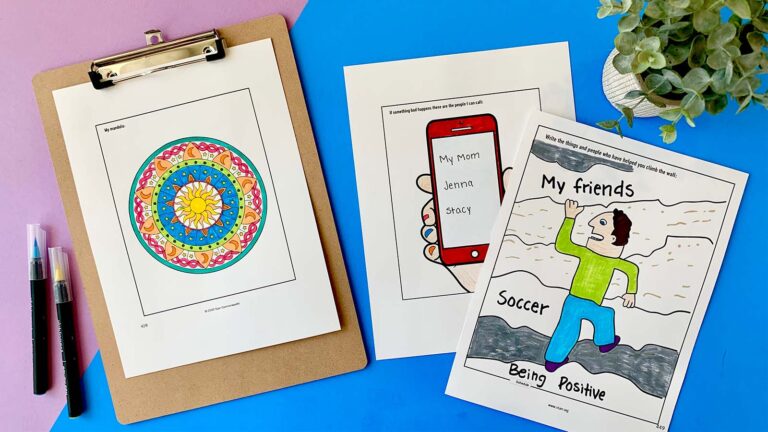Lee is having a tough day. The fourth grader found out recently that his parents are getting divorced, and he can’t stop thinking about it. He slipped and fell in the mud during recess, and his pants and shoes are uncomfortably wet. Now he’s trying to concentrate on his spelling test, but the student next to him keeps tapping their pencil on the table. Suddenly Lee jumps up, grabs the pencil and breaks it in half, then yells, “Shut up! Shut up! Shut up!” His teacher is tempted to punish him but realizes what Lee really needs is help with emotional regulation.
Emotional regulation is a core skill that kids need to be successful in school and in life. So, what is it and how do we teach it?
What is emotional regulation?
Emotional regulation is the ability to manage your emotions and effectively control how you allow emotions to drive your actions. For students, starting with emotional regulation is truly starting at the beginning of SEL skills. Before kids can listen, have empathy, or follow directions, they have to be able to manage their emotions.
Emotional regulation can look like the ability to:
- Identify what you’re feeling
- Respond to feelings without overreacting
- Manage changes in the environment
- Control impulses
- Calm down when getting upset
- Handle emotions in a healthy way
This is not a skill that comes easily to most of us, so it’s important to help kids learn how to regulate and give them opportunities to practice. “Emotional regulation takes place deep inside the emotional center of your brain,” explains Lori Jackson, school psychologist. “When it’s working, you can go smoothly from one event to another, managing the different emotions that arise. When you can’t manage your emotions, each event or activity can bring difficulties and challenges. That’s called emotional dysregulation.”
Here’s a helpful video that explains big emotions to kids:
How do we regulate emotions?
Psychologists break emotional regulation into three broad categories: suppression, reappraisal, and acceptance. When you suppress emotions, you push them down, refusing to acknowledge or act on them. This can be helpful in the short term, but it doesn’t actually help you deal with the emotion. It’s all still there under the surface, waiting to bubble up again.
Reappraisal is about reframing the situation in your mind, allowing you to deal with it calmly and rationally. We can teach kids reappraisal skills in a variety of ways, like mindfulness techniques. We can also urge them to simply accept their emotions, acknowledging them as valid but not letting them control their actions.
As adults, we know these skills don’t come easily. But that’s all the more reason to focus on teaching them. “For kids, dysregulation makes life challenging, friendships difficult, and most significantly, it can make learning impossible,” warns Jackson. To curb that, we need to teach emotional regulation so kids can realize that they’re in control of their feelings and subsequent actions.
Why do some kids struggle with emotional regulation?
We all struggle with emotional regulation at some point (anyone who has sat in a meeting that went on 10 minutes too long can relate), but how much we struggle with emotional regulation depends both on temperament and learned behavior.
A child’s temperament is innate. Even as babies, some children have more trouble self-soothing or calming themselves down. Other kids seem to be able to manage any emotion with no problem. How adults respond to kids’ big reactions impacts the behaviors that children use to manage their emotion, for good and bad. For example, if a child has a temper tantrum because it’s time to leave the park, and the adult gives in and lets them have 10 more minutes to play, the chance that the child will scream and kick next time they are given a limit and feel unhappy are pretty high. Whereas, if the adult sets the limit and coaches the child through their unhappiness, the child learns how to manage disappointment without throwing a tantrum.
Additionally, many kids with disabilities, like ADHD, autism, and other disabilities, have deficits in emotional regulation. So, in order for them to learn, they need to manage their emotions first.
Is emotional regulation SEL?
Emotional regulation falls under the umbrella of SEL (social-emotional skills). SEL skills include self-regulation, social skills, and relationship skills. Without the ability to regulate our emotions, we have a harder time regulating ourselves. And since emotions drive our behavior, we have a hard time responding appropriately to social situations and building relationships.
Read more: What Is SEL?
Why is it important to teach emotional regulation?
Kids can’t learn until they can manage their emotions. Emotional regulation is as important as academic skills. In fact, children who can regulate their emotions are more likely to do well in school and get along with peers. This makes sense since, at the core, emotion drives behavior.
Good emotional regulation can help kids:
- Express themselves in ways that don’t involve losing their temper
- Pay attention and listen to learn
- Control their impulses
- Maintain focus on a task
- Take turns
- Socialize appropriately
- Reflect on choices and consequences
- Bounce back from setbacks
- Stop themselves from getting overwhelmed
- Manage being upset
- Feel calm and in control
Ideas for practicing emotional regulation in the classroom:
1. Think about emotions in advance
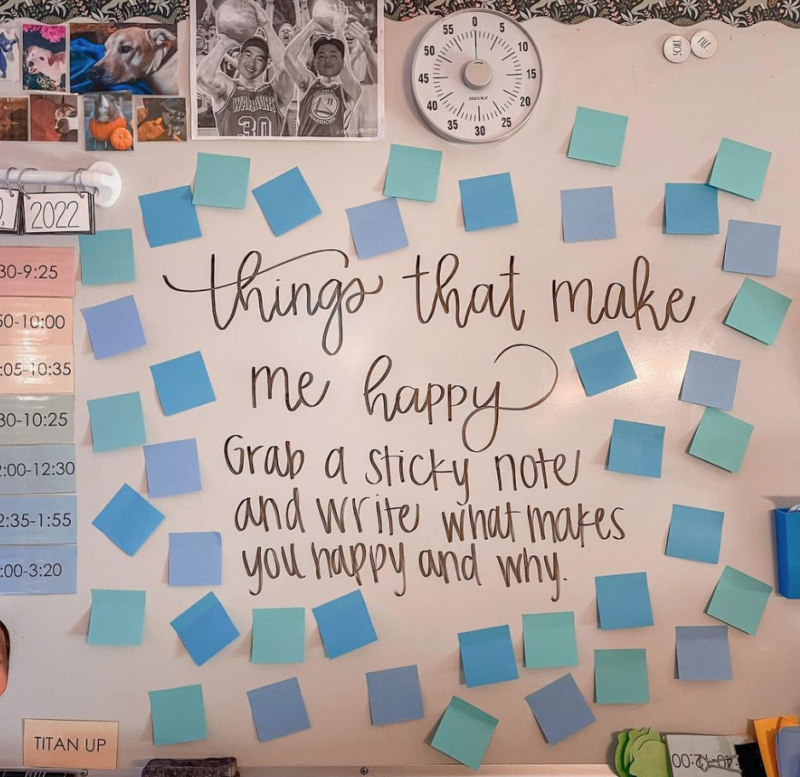
Begin the school day by asking your students a question to find out how they are feeling or what might be bothering them. This whiteboard and sticky note idea is an easy way to implement it into your routine. “Ask your students about their homework or what they ate for breakfast. Ask if anyone fought with their brother or sister,” suggests Lori Jackson, who created an emotional regulation curriculum called The Connections Model. “The idea is to discuss any event that likely elicited a feeling and have everyone share. This sets the tone for the day, giving you the heads up on who might have a tough day and why.”
The Connections Model is based on the science of emotions driving behavior. Their KidConnect Ready2Learn SEL Curriculum integrates into classroom routines, allowing students to apply SEL skills in real time, using real-life situations.
2. Stop and notice emotional regulation as it happens
Students need to actively recognize how they’re applying emotional regulation skills throughout the day. So, when students are working in groups, stop them and point out how you see them positively practicing emotional regulation. After a fire drill, compliment them on how they handled what can be a stressful situation. After recess, talk about how they used emotional regulation while playing a game.
3. Learn to name emotions and connect them to behavior
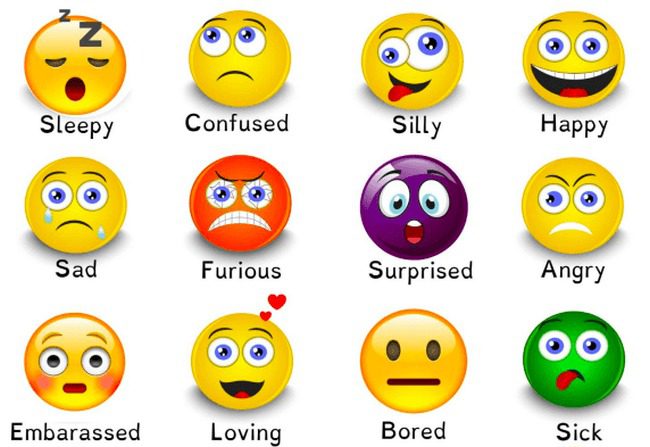
Talk to students about different emotions and how those emotions can cause us to act. For instance, many kids will realize that they cry when they’re sad. But not everyone cries under those circumstances—some people get very quiet or even show anger instead. Start with simple emotions, and ask students to name situations where they might feel those emotions. Then, ask them how they behave when they feel a certain way. It’s OK if some students have different answers than others. The point is for them to make connections about their own thinking and behaviors.
4. Explore the Zones of Regulation
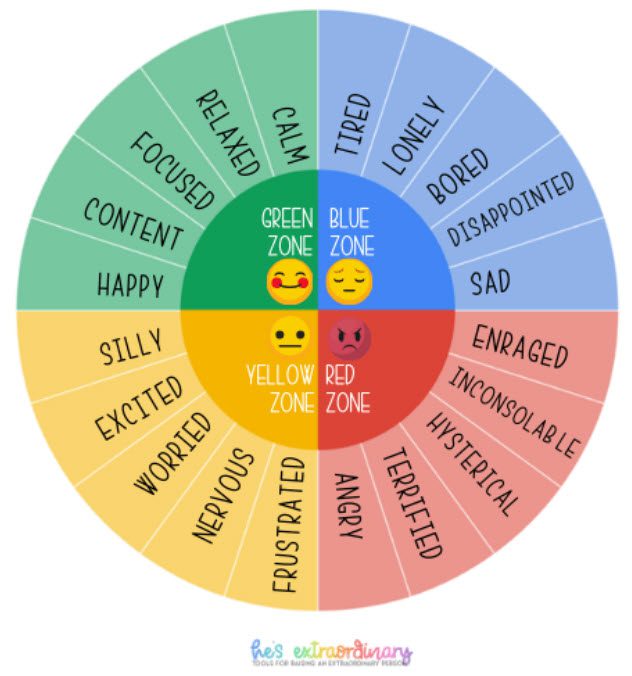
Zones of Regulation, developed by Leah Kuypers, an OT and autism resource specialist, helps kids understand and learn to manage their emotions. Rooted in cognitive behavioral therapy, it’s a framework that uses four colors—blue, green, yellow, and red—to help students identify their feelings and regulate emotion. Teaching students how to read their bodies’ signals, detect triggers, read social context, and consider how their behaviors impact those around them leads to improved emotional control, sensory regulation, self-awareness, and problem-solving skills. Find terrific Zones of Regulation activities to try here.
5. Use books to teach emotions
Stories can be great examples of handling emotions in a responsible way. They can serve as safe and inviting ways to start the conversation about the range of feelings we have and how to handle each. By reading and talking through how the characters’ emotions connect with their actions, students can start to talk through how emotions drive behaviors. Check out these children’s books for teaching SEL skills.
6. Practice using your emotion vocabulary
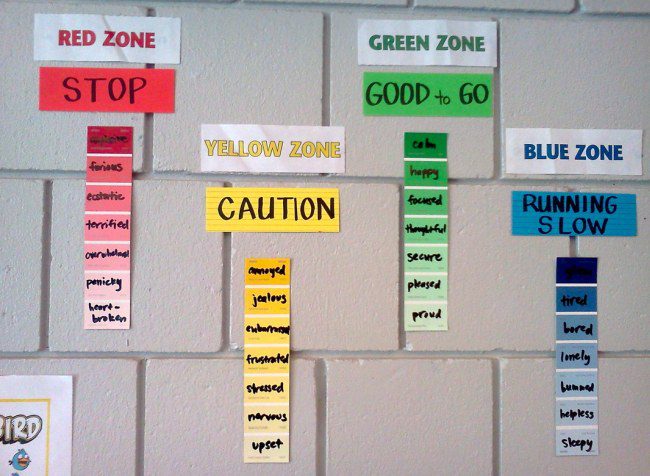
Build your students’ emotion vocabulary by giving them direct access to those words and feelings. Lauren Ross, LCSW and school social worker for the Cherry Creek School District in Denver, Colorado, suggests creating a word wall filled with feelings words. Then, when kids are demonstrating negative behaviors, ask them to look at the wall and choose the words to describe how they’re feeling. This helps them connect those actions and emotions and consider what coping strategies they can try.
7. Act it out
Role-play how to handle different situations, especially those that your students struggle with. Write each scenario on a note card. For example: You get invited to a birthday party. You slip and fall while walking home from school. You open a birthday present you don’t like. Then, have students talk them through or act them out. How would they feel? What would they do? How does their feeling connect with their behavior?
8. Share and model your own emotions

Don’t be afraid to share your own emotions as they occur throughout the day. You’re not superhuman, so of course a stressful day when the printer jams, your students have asked the same question 15 different ways, and you forgot about a mandatory faculty meeting after school will rattle you. Share your feelings with your students—it’s a surefire way to help them understand the connection between feelings and behavior.
9. Practice impulse control with freeze dance
A round of freeze dance—playing music that you randomly stop for students to freeze—is a great way to practice impulse control. Add difficulty by alternating slow and fast music and having students move in time to the music.
10. Teach mindfulness strategies

According to Mindful.org, mindfulness is “the basic human ability to be fully present, aware of where we are and what we’re doing, and not overly reactive or overwhelmed by what’s going on around us.” There are dozens of mindfulness strategies, from meditation and deep breathing to journaling and drawing. As kids learn a strategy that’s useful to them, they can add it to their own emotional regulation toolkit. Explore 50 mindfulness activities here.
11. Create a calm-down corner
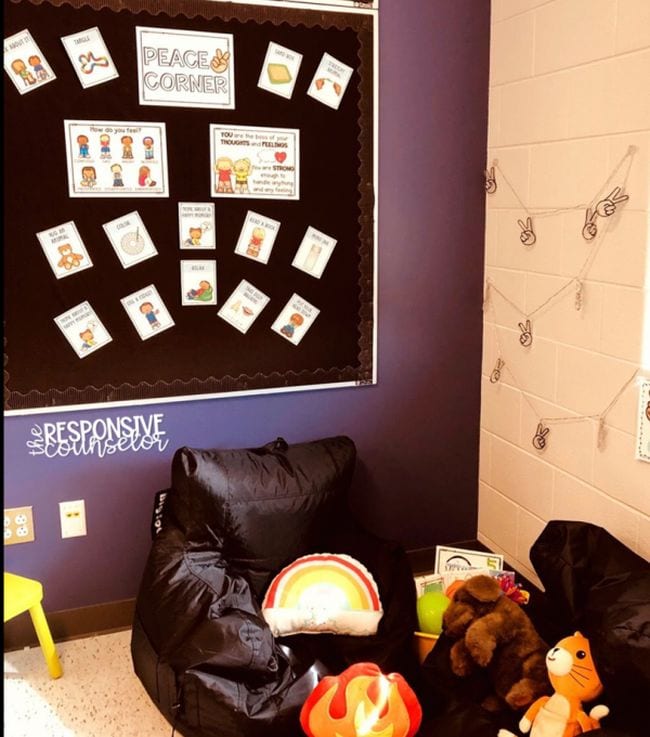
Set aside a dedicated space in your classroom where kids can go to practice their emotional regulation skills. A calm-down corner, sometimes known as a peace corner, gives kids a place to recenter and refocus so they can join the learning again. It can provide helpful tools, like emotion charts, fidget toys, social-emotional books, and more. Learn how to create your own calm-down corner here.
12. Graph emotions
Try having student record their emotions across one entire day on a graph. Every 30 minutes, or in regular intervals, students can check in with themselves and record what they are feeling. Then, they can reflect on how many different things they experienced and how many emotions they felt across the day.
13. Focus on progress, not perfection
Emotional regulation isn’t about being perfect—it’s not about responding to every change and frustration without emotion. No adult is even expected to do that. It is about learning and practicing all the ways kids can respond to emotions, and adjusting as they grow and learn over time.
